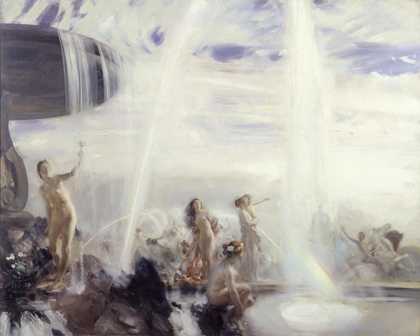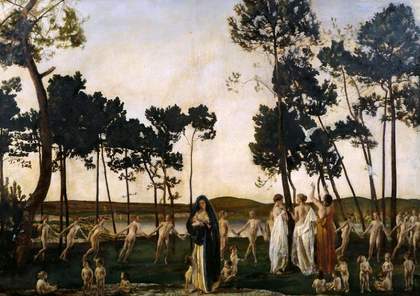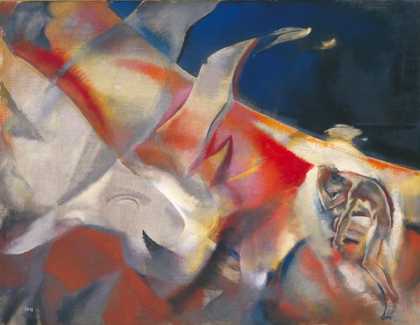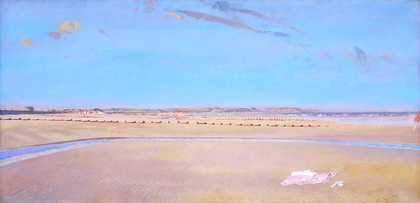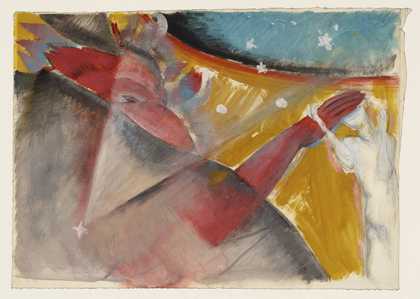Artist biography
In addition to his many society portraits, Sims painted King John Confronted by his Barons for St Stephen's Hall, Westminster in 1924. Just before his death by suicide he painted pictures of a mystical nature, which were initially rejected by the Academy. He was the author of Picture Making: Technique & Inspiration, which was published posthumously by his son Alan Sims with a critical survey of the artist's work and life. He died at St Boswells, Scotland. He was included in the Royal Academy Late Members exhibition of 1933.
Further reading:
Charles Sims, ed. Alan Sims, Picture Making: Technique & Inspiration, London 1934
Harold Speed, 'Charles Sims, R.A.', The Old Water-Colour Society's Club 1928-1929, vol.6, London 1929,
pp.45-66
Terry Riggs
October 1997
Wikipedia entry
Charles Henry Sims (28 January 1873, Islington–13 April 1928, St. Boswells) was a British figurative painter known for his portraits and landscapes. He initially became renowned as a leading Edwardian painter, but following the death of his son in World War I, his work became increasingly idiosyncratic, surreal and controversial. In 1920, he was appointed Keeper, or head, of the Royal Academy Schools, a post he was eventually forced to resign in 1926. At the same time, he became estranged from his wife and children. Sims' final paintings, the Spiritual Ideas, were to some viewers his "most beautiful works," but to others highly disturbing. He committed suicide in 1928.
This biography is from Wikipedia under an Attribution-ShareAlike Creative Commons License. Spotted a problem? Let us know.
Read full Wikipedia entry

